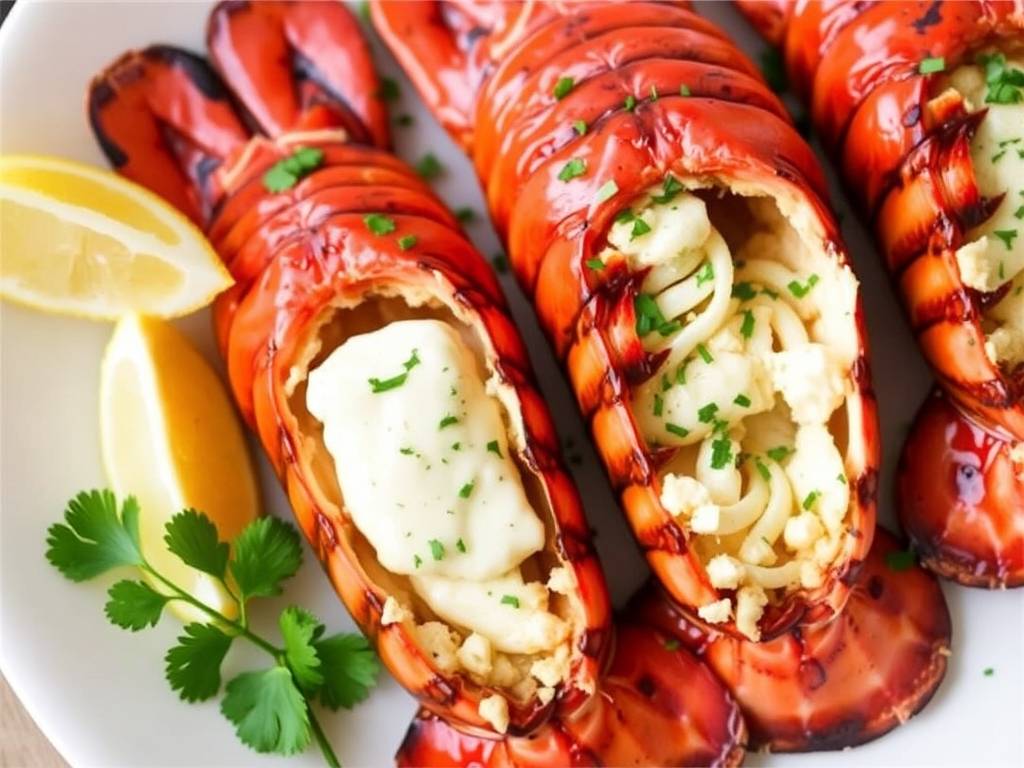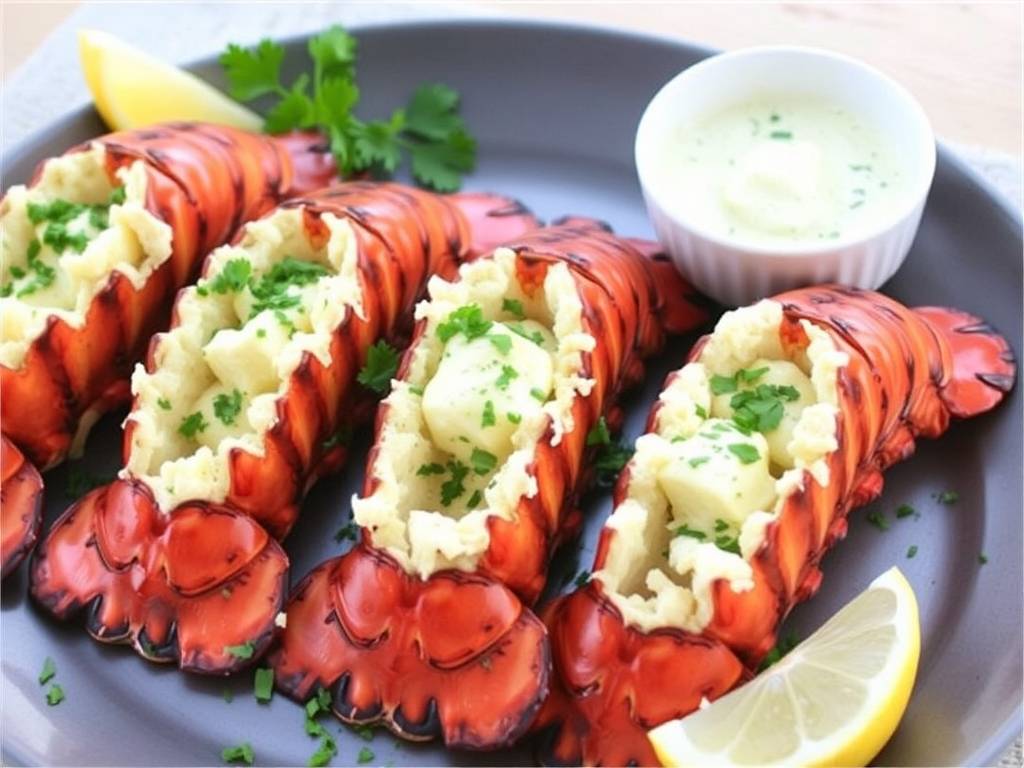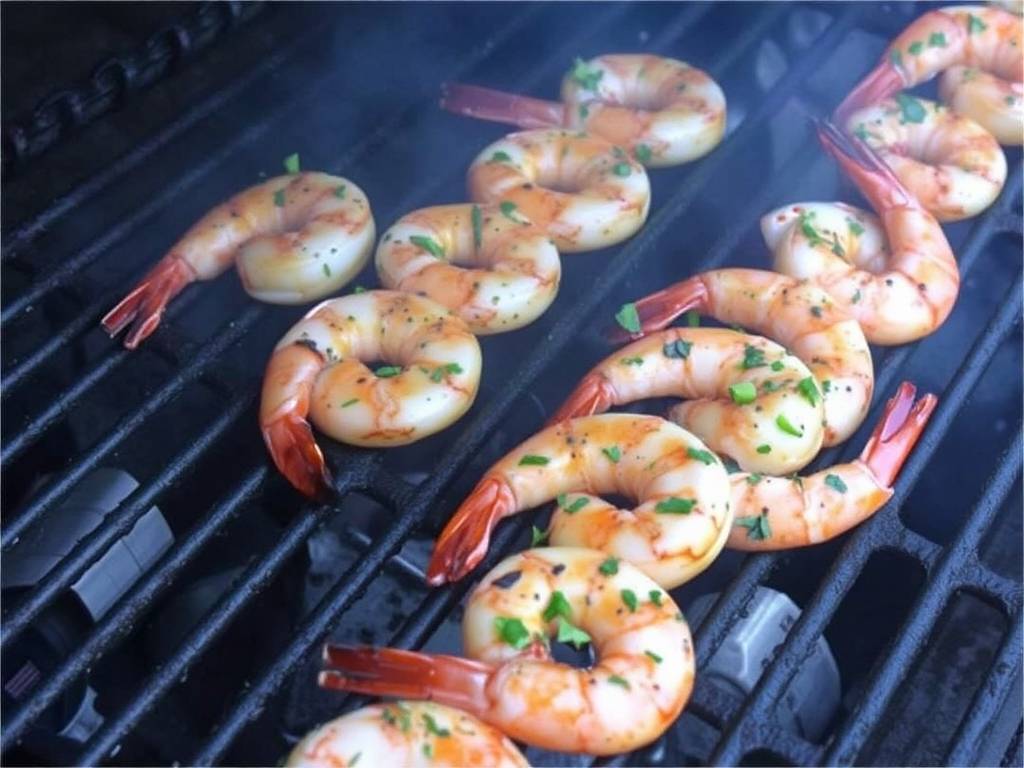The Ultimate Guide to Grilling Perfect Lobster Tails with Lemon Butter and Parsley
There are few culinary experiences as simultaneously luxurious and primal as grilling lobster tails. The marriage of sweet, tender lobster meat with the smoky kiss of the grill is a celebration of summer, a centerpiece for special occasions, and a testament to the fact that sometimes, the best cooking methods are also the most straightforward. While it may seem like a dish reserved for upscale steakhouses, grilling lobster tails at home is an achievable and incredibly rewarding endeavor. This guide will walk you through every step, from selecting your lobster tails to presenting a perfectly grilled masterpiece adorned with a classic, vibrant lemon butter and parsley sauce.
The journey to a perfect grilled lobster tail begins not at the grill, but at the market. Selecting high-quality lobster tails is paramount. You’ll typically find two varieties: cold-water and warm-water. Cold-water lobster tails, from species like the Maine lobster, are widely considered superior. They have a sweeter, more robust flavor and firmer texture compared to their warm-water counterparts. Look for tails that are firm to the touch, with shells that have a deep, speckled greenish-brown or dark blue-green hue (the classic red color appears only after cooking). The meat should be opaque and fill the shell. Frozen tails are an excellent option and are often flash-frozen at peak freshness. If using frozen, the best practice is to thaw them slowly in the refrigerator for 24 hours. Avoid thawing them in water, as this can waterlog the delicate meat.

Once your tails are ready, the next critical step is preparation. Proper preparation ensures even cooking, maximizes flavor absorption, and creates a stunning presentation. The most common and effective technique is the butterfly method. Using sharp kitchen shears, carefully cut lengthwise down the center of the top of the shell, from the open end towards the tail fin. Be cautious not to cut through the bottom shell or the meat itself. Stop cutting just before you reach the fin. Then, using your hands, gently pry the shell open, loosening the meat. Carefully lift the meat through the slit, so it rests on top of the shell, like a butterfly with its wings open. This exposes the meat directly to the heat, allowing it to develop a beautiful sear while the shell underneath protects it from drying out and imparts a subtle oceanic flavor.
Some grill masters prefer to partially detach the meat from the shell, leaving it connected at the tail fin, while others leave it fully attached. For beginners, leaving it fully attached is simpler and just as effective. Once butterflied, you may notice a dark green vein running through the meat. This is the tomalley, the lobster's liver and pancreas. While some consider it a delicacy, it’s best to remove it for a cleaner presentation and taste. You can use a small knife or your fingers to gently pull it out.
Now, it’s time to add the first layer of flavor. A simple brush of olive oil or melted butter over the exposed meat will promote browning and prevent sticking. Season generously with kosher salt and freshly cracked black pepper. At this stage, you can also add other dry seasonings if you wish. A pinch of smoked paprika can enhance the grill flavor, while a tiny amount of cayenne pepper can add a subtle warmth. However, for this classic recipe, we will let the lobster and our finishing sauce be the stars.
While the lobster tails are being prepared, turn your attention to the grill. The key to grilling lobster, as with most seafood, is high, direct heat. Preheat your grill to a medium-high temperature, around 400-450°F (200-230°C). You want a hot fire that will sear the meat quickly, locking in its natural juices. If you are using a charcoal grill, wait until the coals are glowing red and covered with a layer of white ash. For a gas grill, simply preheat with the lid closed for 10-15 minutes. A well-heated grill is non-negotiable; a lukewarm grill will steam the lobster, resulting in a rubbery texture.
Place the lobster tails on the grill, meat-side down, directly over the heat source. You should be greeted with an immediate, satisfying sizzle. Grill for 5-7 minutes with the lid closed. This initial sear is crucial for developing those coveted grill marks and a rich, smoky flavor. After this time, carefully flip the tails so they are shell-side down. The shell will act as a protective boat, allowing the meat to cook through more gently via indirect heat. At this point, you can baste the meat with a little of the lemon butter sauce (which we will prepare next). Close the lid and continue to grill for another 4-6 minutes. The total cooking time will depend on the size of your tails. A good rule of thumb is about 1-1.5 minutes per ounce of tail.
How do you know when they are done? Overcooked lobster becomes tough and chewy, so vigilance is key. The most reliable indicator is internal temperature. Insert an instant-read thermometer into the thickest part of the meat; it should register 135-140°F (57-60°C). Visually, the meat will turn from translucent to completely opaque white. It will also be firm to the touch but still yield slightly. The shell will have transformed into a brilliant, vibrant red. As soon as these signs are met, immediately remove the tails from the grill and transfer them to a clean platter. Let them rest for a few minutes. This allows the juices to redistribute throughout the meat, ensuring every bite is succulent.
While the lobster is grilling or resting, prepare the quintessential accompaniment: lemon butter and parsley sauce, also known as beurre blanc. This sauce is simplicity itself, yet it elevates the lobster to sublime heights. In a small saucepan over low heat, melt one stick (½ cup or 113 grams) of unsalted butter. Using unsalted butter allows you to control the salt level precisely. Once melted, add the minced flesh of two garlic cloves. Let the garlic infuse into the butter for a minute or two, but be careful not to let it brown, as burnt garlic will turn bitter. Then, turn off the heat.

Squeeze in the fresh juice of one large lemon. The bright acidity of the lemon cuts through the richness of the butter and complements the sweetness of the lobster perfectly. Finally, stir in a quarter cup of finely chopped fresh flat-leaf parsley. Flat-leaf parsley has a more robust flavor than its curly cousin, making it ideal for cooking. The parsley adds a fresh, grassy note and a pop of color. Season the sauce with a pinch of salt and a crack of black pepper. For an extra dimension, a teaspoon of fresh thyme leaves or a pinch of red pepper flakes can be wonderful additions. Keep the sauce warm, but not hot, until ready to serve.
Presentation is the final flourish. Place the grilled lobster tails on individual plates or a large serving platter. You can serve them as is, with a small bowl of the lemon butter parsley sauce for dipping, or you can be more dramatic. Using kitchen shears, fully cut the bottom shell to release the meat, then place the whole, succulent tail on the plate. Alternatively, use the shears to cut the meat into medallions for easier sharing. Drizzle a generous amount of the warm sauce over the top of the lobster tails, allowing it to pool enticingly around the plate. Garnish with an extra sprinkle of fresh parsley and a wedge of lemon for a final squeeze of brightness.
Accompaniments should be simple to let the lobster shine. Grilled asparagus, a fresh arugula salad with a light vinaigrette, or classic drawn butter for purists are all excellent choices. A crisp, chilled white wine like a Chardonnay, Sauvignon Blanc, or a sparkling wine provides the perfect counterpoint to the rich, savory flavors.
Grilling lobster tails may seem intimidating, but by following these steps—selecting quality tails, mastering the butterfly technique, grilling with high heat, and finishing with a vibrant sauce—you will unlock a world of gourmet cooking in your own backyard. It’s a process that engages all the senses: the sound of the sizzle, the sight of the transforming shell, the aroma of garlic and butter mingling with smoke, and finally, the taste of sweet, perfectly cooked lobster. It’s more than a meal; it’s an experience, a celebration of fire, flavor, and the incredible bounty of the sea.






发表评论